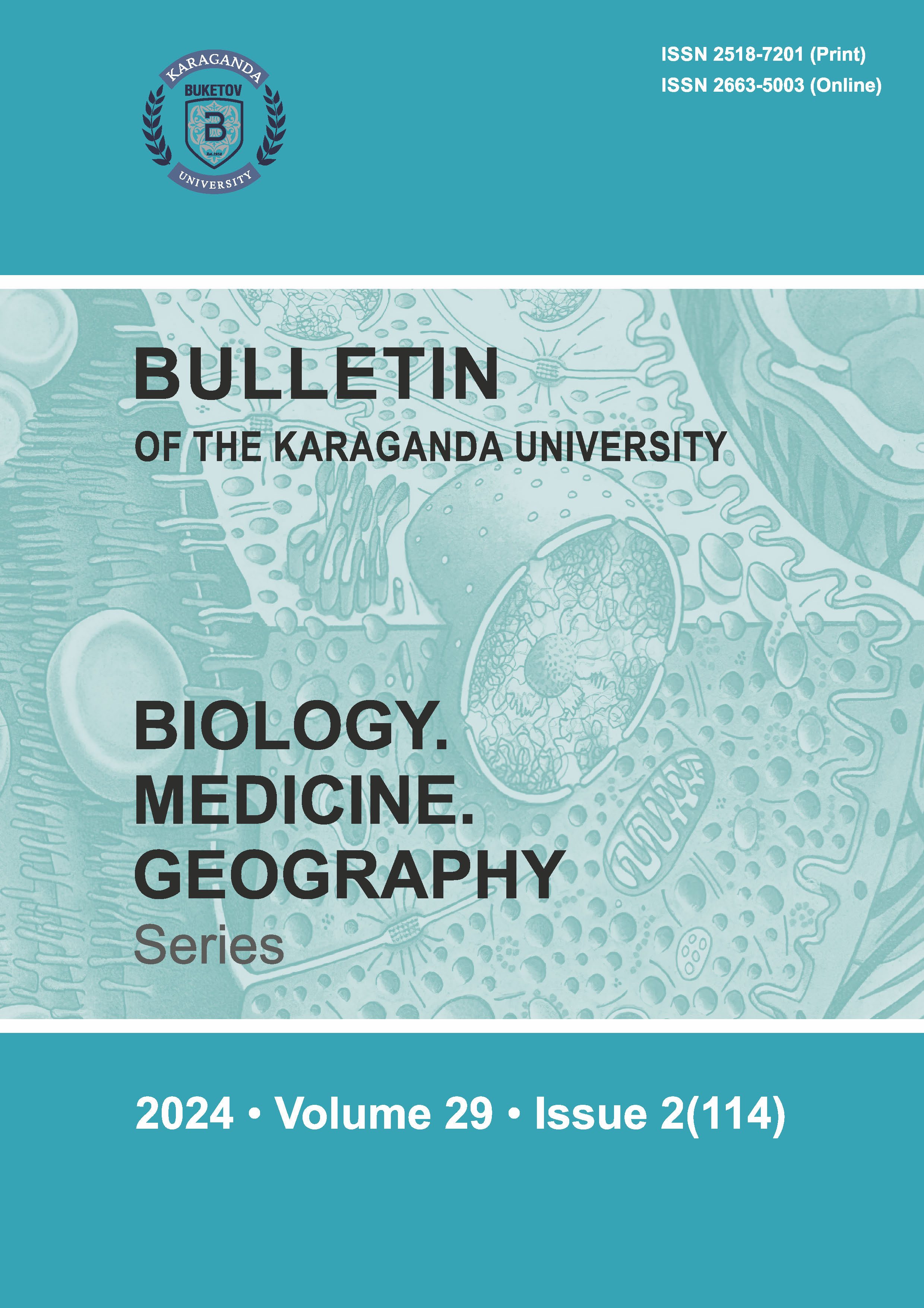Determination of the quantitative content of ascorbic acid in plants of the flora of Central Kazakhstan
DOI:
https://doi.org/10.31489/2024bmg2/104-109Keywords:
ascorbic acid, titrimetry, quantitative determination, vitamin C, currant, drupeberry, strawberry, juniper, pineAbstract
In recent years, the quantitative analysis of ascorbic acid (vitamin C) has attracted increasing scientific interest in the fields of biochemistry, medicine, pharmaceutical production and food production due to the fact that vitamin C plays an important role in maintaining human health. There are many methods for determining vitamin C: spectrophotometric, non-spectrophotometric, HPLC, titration, enzymatic method and fluorometry. We carried out a quantitative determination of ascorbic acid in dried plant materials of Fragaria vesca L. leaves, Rubus saxatilis L. leaves and berries, Juniperus sabina L. leaves, Ribes L. leaves, and Pinus sylvestris L. by acid-base titration with 0.1 M NaOH solution. The plants studied were found to berich sources of ascorbic acid (vitamin C). Based on the results of titrimetric analysis to determine the content of ascorbic acid, a number of plants can be identified that may be potential candidates for screening for antioxidant activity.



